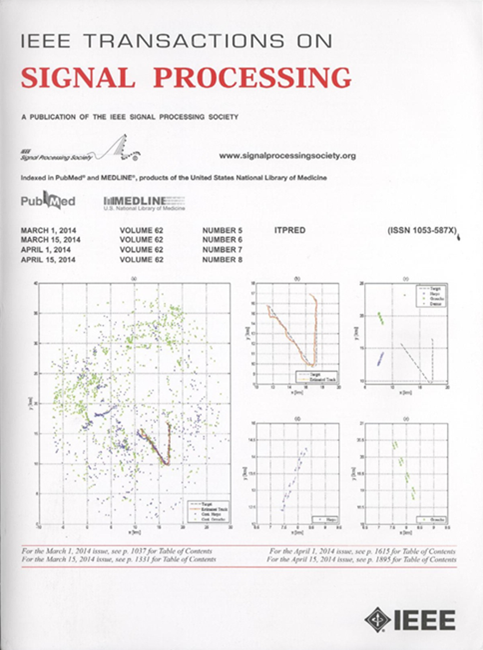Radar Space-Time Domino-Sparse-Pulse Feedback Beampattern Synthesis
IF 4.6
2区 工程技术
Q1 ENGINEERING, ELECTRICAL & ELECTRONIC
引用次数: 0
Abstract
In radar space-time adaptive processing (STAP), the sliding window size of the filter is a crucial design parameter that significantly influences system performance. A smaller sliding window size while maintaining performance provides several benefits, particularly in terms of faster response and lower range migration probability on the receiver side. In this paper, we tackle the problem of space-time feedback beampattern synthesis (FBS), which reduces the sliding window size by reducing the required number of pulses while maintaining performance. This is achieved through the formulation of two novel models. Motivated by the domino effect, which creates a chain reaction of falling dominoes when the first one is knocked down, the first formulation introduces a novel domino-group-sparsity (DGS) scheme to achieve domino-sparse-pulses (DSP), and its adaptive version is also provided. While the second formulation minimizes the ratio of maximal sidelobe level to the minimal mainlobe level in the FBS to attain performance comparable to the former but with even fewer pulses. Especially, for the latter, we solve the resultant nested-fractional program by decoupling the fractions layer by layer. Simulation results are provided to demonstrate the effectiveness of the proposed methods.雷达时空多米诺稀疏脉冲反馈波束图合成
在雷达空时自适应处理(STAP)中,滤波器的滑动窗口大小是影响系统性能的关键设计参数。在保持性能的同时,更小的滑动窗口大小提供了几个好处,特别是在接收端更快的响应和更低的范围迁移概率方面。在本文中,我们解决了时空反馈波束图合成(FBS)的问题,该问题通过减少所需的脉冲数来减小滑动窗口大小,同时保持性能。这是通过两个新模型的制定来实现的。在多米诺效应的激励下,当第一个多米诺骨牌被击倒时,会产生多米诺骨牌倒下的连锁反应,第一种公式引入了一种新的多米诺-群稀疏(DGS)方案来实现多米诺-稀疏脉冲(DSP),并提供了其自适应版本。而第二种公式最小化FBS中最大副瓣电平与最小主瓣电平的比率,以获得与前者相当的性能,但脉冲更少。特别是对于后者,我们通过逐层解耦来求解得到的嵌套分数程序。仿真结果验证了所提方法的有效性。
本文章由计算机程序翻译,如有差异,请以英文原文为准。
求助全文
约1分钟内获得全文
求助全文
来源期刊

IEEE Transactions on Signal Processing
工程技术-工程:电子与电气
CiteScore
11.20
自引率
9.30%
发文量
310
审稿时长
3.0 months
期刊介绍:
The IEEE Transactions on Signal Processing covers novel theory, algorithms, performance analyses and applications of techniques for the processing, understanding, learning, retrieval, mining, and extraction of information from signals. The term “signal” includes, among others, audio, video, speech, image, communication, geophysical, sonar, radar, medical and musical signals. Examples of topics of interest include, but are not limited to, information processing and the theory and application of filtering, coding, transmitting, estimating, detecting, analyzing, recognizing, synthesizing, recording, and reproducing signals.
 求助内容:
求助内容: 应助结果提醒方式:
应助结果提醒方式:


